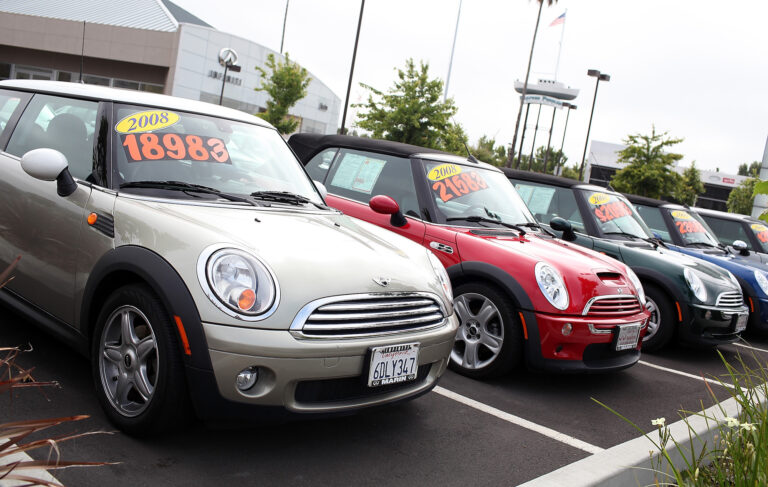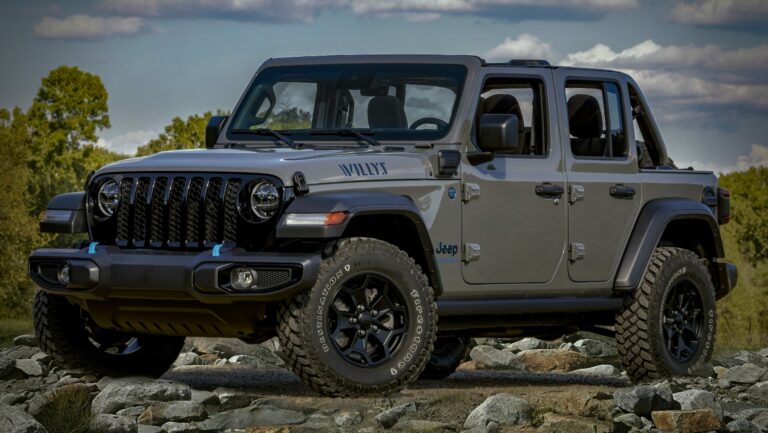1980 Jeep Cherokee Chief For Sale: A Comprehensive Buyer’s Guide
1980 Jeep Cherokee Chief For Sale: A Comprehensive Buyer’s Guide jeeps.truckstrend.com
For automotive enthusiasts and off-road aficionados, the phrase "1980 Jeep Cherokee Chief For Sale" evokes images of rugged capability, classic American design, and a bygone era of adventure. More than just a vehicle, the 1990 Jeep Cherokee Chief represents a significant piece of automotive history – a pioneer in the luxury SUV segment that combined the utility of a truck with the comfort (for its time) of a family car. As these iconic machines become increasingly sought after by collectors and those seeking a unique driving experience, understanding what makes them special and what to look for when purchasing one is paramount. This comprehensive guide will delve into every aspect of acquiring a 1980 Jeep Cherokee Chief, ensuring you’re well-equipped to find and enjoy your piece of off-road heritage.
The Enduring Appeal of the 1980 Jeep Cherokee Chief
1980 Jeep Cherokee Chief For Sale: A Comprehensive Buyer’s Guide
The 1980 Jeep Cherokee Chief belongs to the "SJ" generation of Jeeps, produced from 1974 to 1983. These full-size, two-door SUVs were revolutionary, predating the mainstream SUV boom by decades. The "Chief" trim level, introduced in the mid-70s, specifically targeted a younger, more adventurous demographic. It stood out with its wider fenders, bold body graphics (often featuring "Chief" script), and more aggressive stance, hinting at its off-road prowess.
The Chief’s appeal lies in its blend of utilitarian ruggedness and a surprising degree of style. It was a vehicle designed to tackle tough trails during the week and cruise through town on the weekend. Its robust body-on-frame construction, powerful V8 engine options, and legendary Quadra-Trac full-time four-wheel-drive system made it a formidable competitor off-road, while its spacious interior and available creature comforts offered a degree of practicality. Today, this combination makes the 1980 Jeep Cherokee Chief a highly desirable classic for those who appreciate authentic American iron, capable off-roaders, or simply a vehicle with undeniable character and a strong nostalgic pull.
Key Features & Specifications of the 1980 Cherokee Chief
Understanding the core specifications of the 1980 Jeep Cherokee Chief is crucial for any prospective buyer. While exact configurations could vary, here’s a general overview:
- Engine Options: The primary powerplants for 1980 models were the robust AMC 360 cubic inch (5.9L) V8 engine, known for its torque and durability, or the more fuel-efficient AMC 258 cubic inch (4.2L) inline-six. The V8 is generally preferred by enthusiasts for its power, especially for off-roading or towing.
- Transmission: Buyers could choose between a manual transmission (often a T-176 4-speed) or a popular automatic transmission (usually the Chrysler TorqueFlite 727, a highly reliable unit).
- Drivetrain: The iconic Quadra-Trac full-time four-wheel-drive system was a hallmark of the SJ Cherokee. This system provided continuous power to all four wheels, enhancing traction in various conditions without the need for manual engagement. Some models might have featured a part-time 4WD system, so verifying is important.
- Exterior Features: The Chief package distinguished itself with unique styling cues:
- Fender Flares: Prominent, often body-colored or black, adding to its muscular look.
- Graphics: Bold "Chief" script and stripe decals were common.
- Grille: A distinctive chrome grille with vertical bars.
- Wheels: Often came with unique steel wheels or optional aluminum slots.

- Interior: While not luxurious by modern standards, the Chief offered comfortable seating for five, a spacious cargo area, and a functional dashboard with clear gauges. Features like air conditioning, power windows, and power locks were optional.

These features contribute to the 1980 Chief’s classic appeal and rugged utility, making it a capable and stylish choice for enthusiasts.

What to Look For When Buying a 1980 Jeep Cherokee Chief (Inspection Guide)
Acquiring a vintage vehicle like the 1980 Jeep Cherokee Chief requires a thorough inspection. These Jeeps are nearly half a century old, and condition varies wildly. Here’s a comprehensive checklist:
- Rust: This is the primary enemy of vintage Jeeps.
- Body Panels: Check rocker panels, lower door seams, fender wells, tailgate, and the area around the windshield.
- Frame: Inspect the entire frame, especially near suspension mounting points, crossmembers, and where the body mounts. Minor surface rust is common, but significant rot is a deal-breaker.
- Floorboards: Lift carpets and check for soft spots, holes, or previous patch jobs.
- Mechanical Condition:
- Engine: Listen for unusual noises (knocks, rattles, excessive lifter tick), check for oil leaks (common but quantify severity), examine exhaust smoke (blue for oil, white for coolant, black for rich fuel). Verify cold start behavior.
- Transmission: For automatics, ensure smooth shifts and no slipping. For manuals, check clutch engagement and gear selection. Look for fluid leaks.
- Drivetrain: Engage 4WD (if possible) and listen for clunks or grinding. Check universal joints (U-joints) for play, and differentials for leaks or noise. Inspect transfer case operation.
- Suspension & Steering: Look for worn bushings, leaky shocks, broken leaf springs, or excessive play in the steering linkage. Drive the vehicle to assess steering precision and suspension feel.
- Brakes: Check for spongy pedal, pulling, or grinding noises. Inspect brake lines for rust or leaks.
- Electrical System: Test all lights (headlights, tail lights, turn signals, brake lights), gauges, wipers, heater/AC fan, power windows (if equipped), and radio.
- Interior: Assess the condition of seats (tears, foam integrity), dashboard (cracks), headliner (sagging), and carpets. Originality is a plus, but minor wear is expected.
- Exterior: Examine paint condition (original vs. repaint quality), body panel alignment, and the integrity of all Chief-specific trim and badges. Check glass for cracks or delamination.
- Documentation: Request service records, ownership history, and a clear title. A vehicle with well-documented maintenance is always preferable.
Restoration vs. Preservation: Making the Right Choice
When considering a 1980 Jeep Cherokee Chief for sale, you’ll likely encounter vehicles in various states: from rusty projects to fully restored showpieces. Deciding between a restoration project and a preserved original involves several factors:
- Restoration: A full, body-off restoration can bring a vehicle back to factory-new condition or even better.
- Pros: Perfect aesthetics, reliable mechanicals, potentially higher value.
- Cons: Extremely costly and time-consuming. Requires specialized skills or significant financial investment in professionals. Parts sourcing can be challenging.
- Preservation: Focuses on maintaining the vehicle’s originality and character, embracing its "patina."
- Pros: Retains historical authenticity, often more affordable, celebrates the vehicle’s journey.
- Cons: May have minor cosmetic imperfections, requires careful maintenance to prevent further deterioration.
For most buyers, a well-maintained "driver" quality vehicle is the sweet spot—one that’s mechanically sound and presentable, perhaps with minor cosmetic needs. Sourcing parts for SJs can be a treasure hunt, with a mix of new old stock (NOS), reproduction parts, and used components from salvage yards or online forums.
Owning and Driving a 1980 Jeep Cherokee Chief
Owning a vintage Jeep is a unique experience. While it won’t offer the refined ride or fuel economy of a modern SUV, it provides an unparalleled connection to the road and a sense of rugged authenticity.
- Maintenance: Expect more frequent and hands-on maintenance than with a new vehicle. Familiarity with basic mechanics or a trusted mechanic specializing in vintage vehicles is invaluable. Parts are generally available, but some specific trim pieces can be elusive.
- Fuel Economy: Be realistic. V8 models, especially with the Quadra-Trac system, are thirsty. Expect single-digit to low-double-digit MPG figures.
- Driving Experience: The Chief offers a commanding view of the road. Its steering may feel looser than modern vehicles, and the ride is firm but compliant over rough terrain. It’s a vehicle that encourages a more engaged driving style.
- Community: The SJ Cherokee has a passionate and supportive community of owners. Online forums, social media groups, and clubs are excellent resources for advice, parts, and camaraderie.
- Investment Potential: Well-maintained and original examples of the 1980 Jeep Cherokee Chief have seen a steady appreciation in value, making them not just a hobby but potentially a sound investment.
The Buying Process: Tips for a Successful Purchase
- Research Market Values: Use online auction sites, classic car listing sites, and recent sales data to get a realistic understanding of prices for different conditions.
- Set a Budget: Beyond the purchase price, factor in potential restoration costs, immediate repairs, insurance, and ongoing maintenance.
- Private Seller vs. Dealer/Auction: Private sellers often offer better prices but "as-is" sales. Dealers or classic car specialists may offer some guarantees but at a premium. Auctions can be unpredictable.
- Pre-Purchase Inspection (PPI): If possible, have an independent mechanic specializing in vintage 4x4s or Jeeps inspect the vehicle, especially if it’s far away. This small investment can save you thousands.
- Negotiation: Be prepared to negotiate. Highlight any flaws you found during your inspection to justify a lower offer.
- Title Transfer & Registration: Ensure the seller has a clear title and understand your local requirements for transferring ownership and registering a classic vehicle.
Potential Challenges & Solutions
- Finding Unmolested Examples: Many SJs have been modified, rusted away, or poorly repaired. Patience is key to finding a good starting point.
- Parts Availability: While many mechanical parts are shared with other AMC/Jeep vehicles, specific Chief trim pieces can be scarce. Solution: Join owner forums, explore reproduction part manufacturers, and be prepared to scour salvage yards.
- Fuel Efficiency: The thirst of the V8 can be a deterrent for daily driving. Solution: Consider the I6 engine for better economy, or simply accept the cost as part of owning a classic.
- Reliability of Older Components: Over time, rubber hoses, seals, and electrical wiring can degrade. Solution: Proactive replacement of wear items and a good understanding of the vehicle’s systems.
Price Table: 1980 Jeep Cherokee Chief For Sale
The price of a 1980 Jeep Cherokee Chief varies significantly based on condition, originality, mileage, and specific options.
| Condition Category | Estimated Price Range (USD) | Key Characteristics |
|---|---|---|
| Project/Parts | $2,000 – $7,000 | Significant rust, non-running or major mechanical issues, incomplete, suitable for full restoration or parts donor. |
| Driver Quality | $8,000 – $20,000 | Runs and drives reliably, minimal rust (surface only), interior wear and tear, minor cosmetic flaws, good candidate for mild restoration. |
| Restored/Good | $21,000 – $35,000 | Solid, well-maintained, potentially older repaint, good running condition, minor imperfections, ready to enjoy. |
| Show Quality/Concours | $36,000 – $60,000+ | Excellent, often frame-off restoration, near-flawless paint and interior, original or period-correct components, low mileage. |
Note: These are estimates and can fluctuate based on market demand, location, specific features (e.g., V8 vs. I6, manual vs. automatic, Quadra-Trac), and historical significance.
Frequently Asked Questions (FAQ)
Q: Are parts hard to find for a 1980 Jeep Cherokee Chief?
A: Mechanical parts are generally available as many components were shared across AMC and Jeep lines. Specific Chief-exclusive body trim and interior pieces can be challenging to find but are often available through specialty suppliers or used parts networks.
Q: Is it reliable for daily driving?
A: A well-maintained and properly sorted 1980 Chief can be reliable for daily driving, but it will require more consistent attention and maintenance than a modern vehicle. Expect less refinement and higher fuel consumption.
Q: What’s the fuel economy like?
A: Not great. Expect single-digit to low-double-digit miles per gallon (MPG), especially with the V8 engine and Quadra-Trac 4WD.
Q: Can I modify it for off-roading?
A: Absolutely! The SJ Cherokee platform is highly capable and popular for off-road modifications, including lift kits, larger tires, and drivetrain upgrades. Many aftermarket parts are available.
Q: What’s the difference between a Chief and a Wagoneer?
A: Both are SJ platform vehicles. The Wagoneer was marketed as a more upscale, family-oriented SUV, often featuring woodgrain trim and more luxury options. The Chief was specifically a two-door model with a sportier, more rugged aesthetic, wider fenders, and unique graphics.
Q: Is a 1980 Jeep Cherokee Chief a good investment?
A: Well-preserved, original, or professionally restored examples have shown appreciation in value over recent years. As iconic classics, their appeal is likely to endure, making them a potentially good long-term investment for enthusiasts.
Conclusion
The pursuit of a "1980 Jeep Cherokee Chief For Sale" is more than just a search for transportation; it’s a quest for a piece of automotive history, a symbol of rugged American spirit, and an invitation to adventure. By understanding its historical significance, key features, and the critical aspects of inspection and ownership, prospective buyers can confidently navigate the market. Whether you aim for a full restoration or a well-preserved driver, owning a 1980 Jeep Cherokee Chief offers a unique and rewarding experience, connecting you to a legacy of off-road capability and timeless style. It’s a vehicle that continues to turn heads and inspire journeys, truly embodying the spirit of "Go anywhere, do anything."






